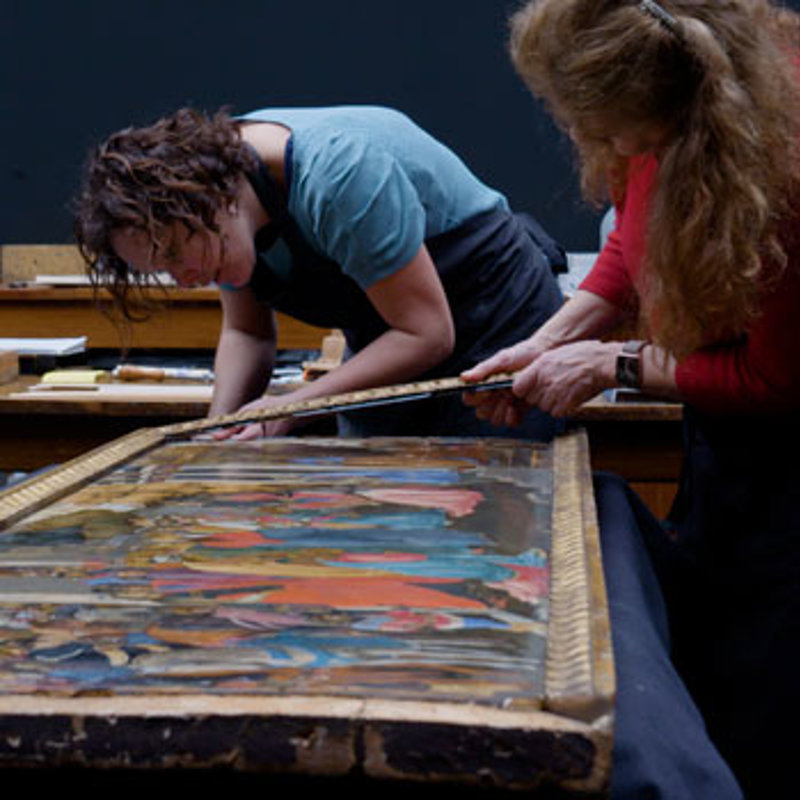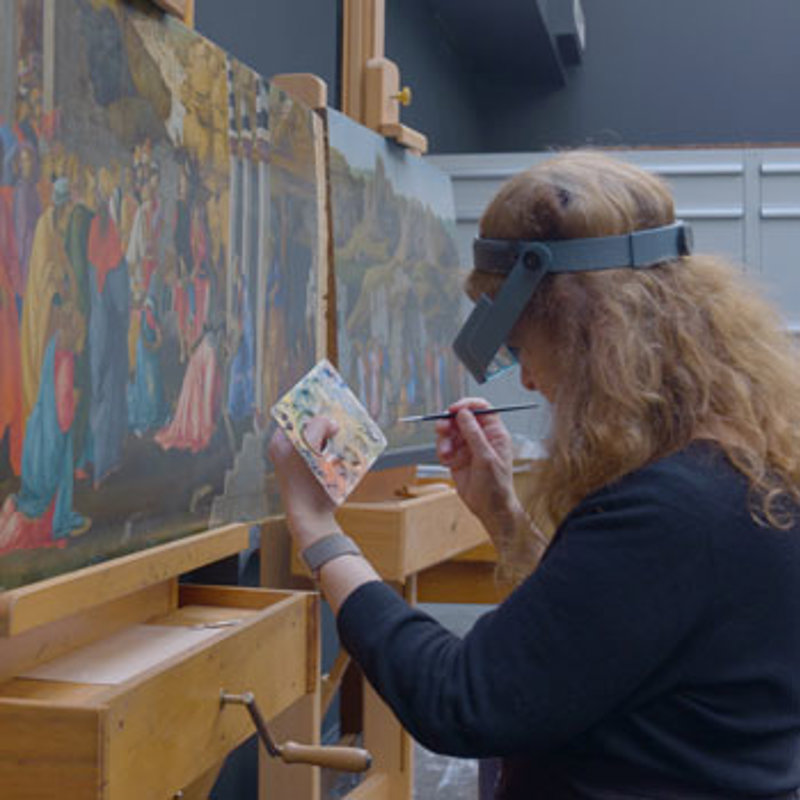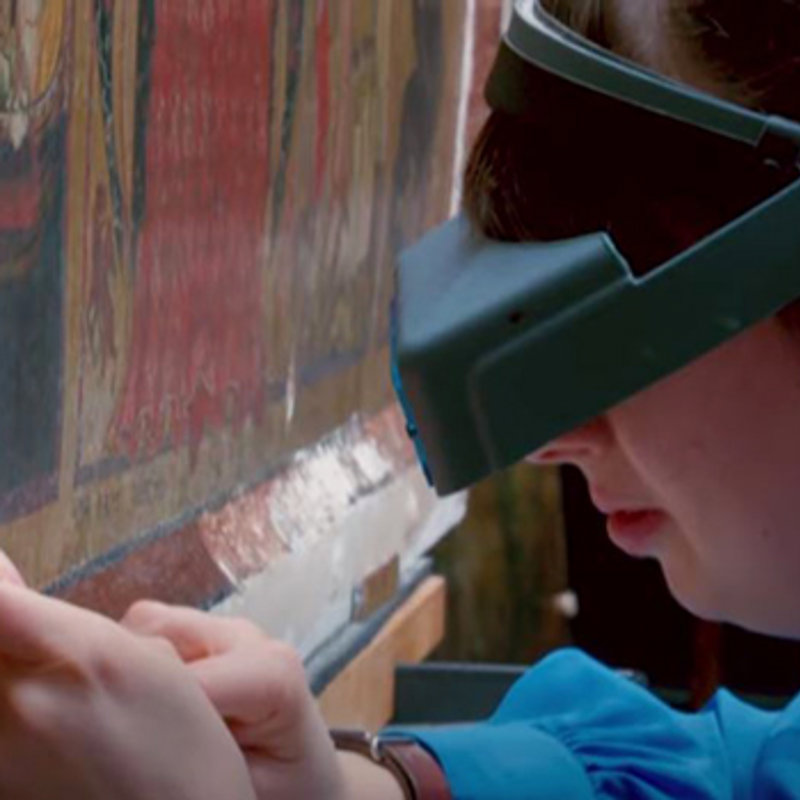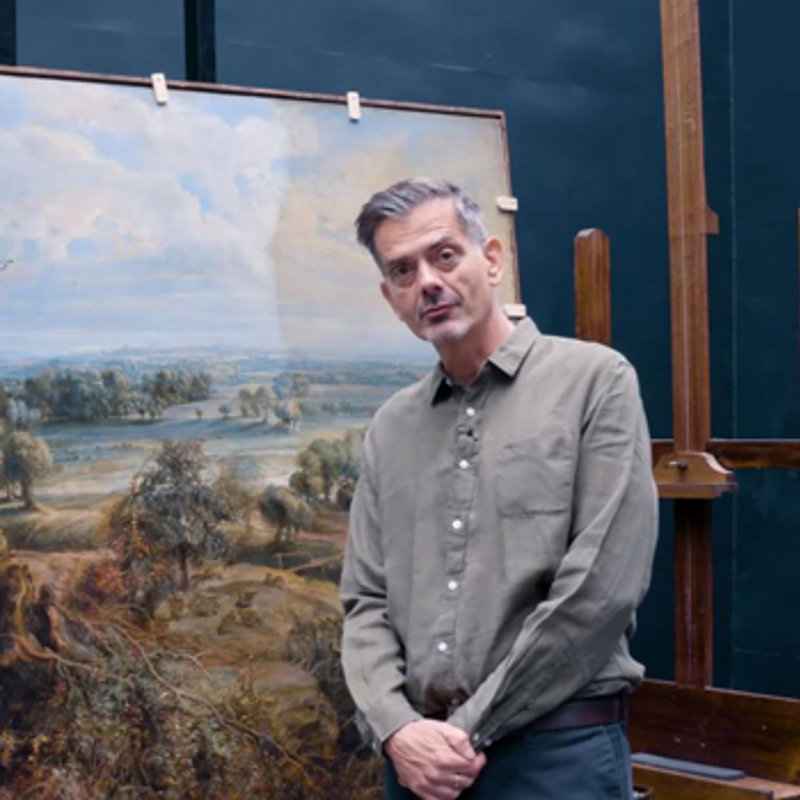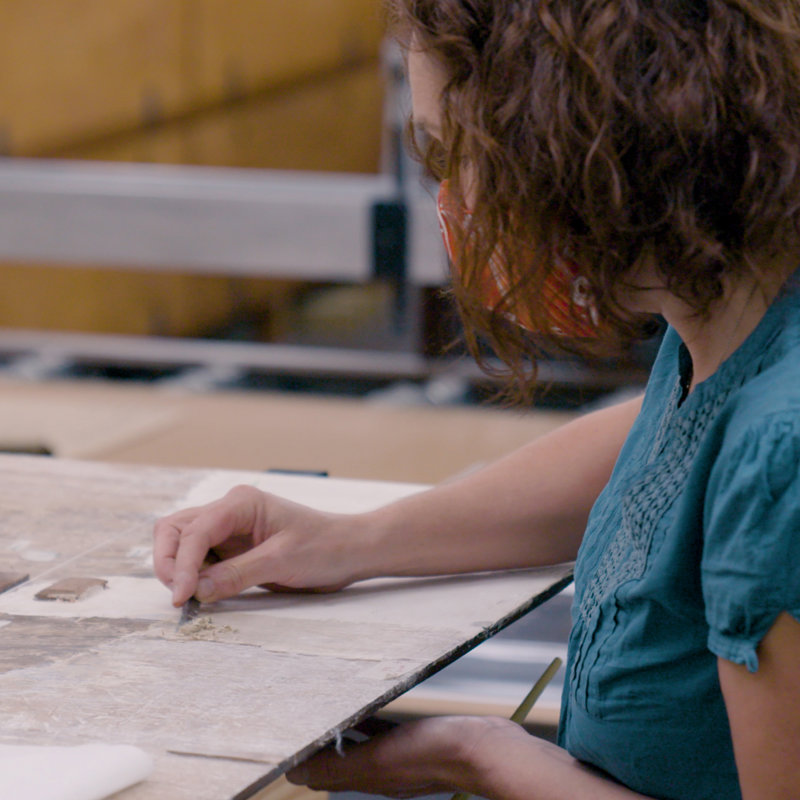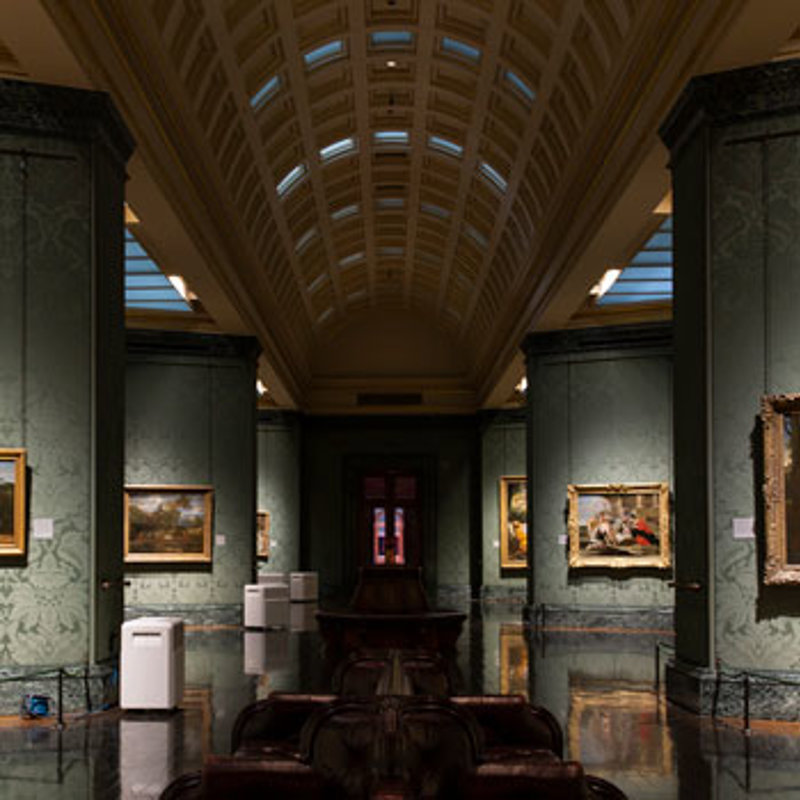It has long been suspected that Botticelli worked with Filippino on 'Adoration of the Kings', but how can we tell which elements of the painting were painted by Botticelli, and which were painted by Filippino?
In this episode, Restorer Jill Dunkerton and Scientist Marta Melchiorre show the techniques they used to investigate this, and reveal some of their surprising discoveries:
Methods and scientific techniques used in the investigation:
Traditional connoisseurship: The ability to recognise an artist’s style through careful looking at paintings, based on a thorough knowledge of the works of that artist. In this case, this process was helped by the fact that the National Gallery Collection includes two more panels showing the Adoration of the Kings, one by Botticelli, and one by Filippino.
Stereomicroscope examination: Allows us to observe the painting surface more clearly, under magnification. More than 200 photomicrographs of the painting were taken throughout this investigation.
Macro X-Ray fluorescence (XRF) scanning: A spectroscopic imaging technique used to map the distribution of chemical elements present in the paint at or below the surface of a painting. As different pigments contain specific elements (such as lead, copper, mercury, iron and so on) the XRF maps of these elements are useful to identify the composition and structure of various paint passages. This provides, in a non-invasive way, insight into an artist's painting technique and helps us to visualise changes made during the course of painting.
Infrared reflectography (IRR): Used to ‘see through’ paint layers that are impenetrable to the human eye. In this case, IRR enabled us to see through the paint layers to detect the underdrawing sketched out on the white gesso of the panel.
Reflectance imaging spectroscopy (RIS): A non-invasive spectroscopic imaging technique used to investigate and map the composition of painting materials in a way that is complementary to XRF scanning. The state of the art RIS system used for this investigation was built in-house at the National Gallery, it works in the 'deep' infrared range (up to 2500 nm), which improves the visualisation of underdrawings in areas not easily penetrated by wavelengths used for traditional reflectography (900-1700 nm).
3D scanning: High resolution 3D renders of the surface texture of the painting revealed areas where the paint had been scraped away, including one place where a knife had gouged the gesso.
Technical Bulletin
You can read about the Conservation and Scientific departments' research and investigation of this painting, in full, in Volume 41 of the Technical Bulletin.
Sponsored by Nikon, Digital Content Partner


